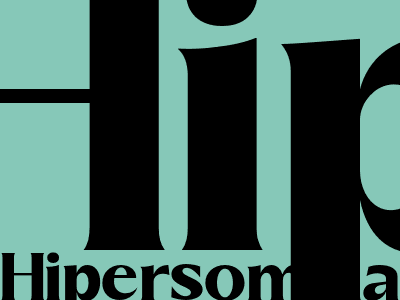Hipersomnia: An In-Depth Guide
Understanding Hipersomnia
Hipersomnia, a sleep disorder characterized by excessive daytime sleepiness (EDS), affects individuals' ability to stay awake during the day despite getting enough sleep at night. It is distinct from other sleep disorders like insomnia, which involves difficulty falling or staying asleep.
Prevalence and Risk Factors
Hipersomnia affects approximately 4% of the population, with higher prevalence among adolescents and young adults. Risk factors include genetics, family history, certain medical conditions (e.g., narcolepsy, thyroid issues), and lifestyle factors (e.g., shift work, sleep deprivation).
Types of Hipersomnia
There are two main types of hipersomnia:
- Idiopathic hypersomnia (IH): A primary sleep disorder with no underlying medical cause.
- Secondary hypersomnia: Caused by another medical condition, such as narcolepsy, sleep apnea, or psychiatric disorders.
Symptoms of Hipersomnia
The primary symptom of hipersomnia is EDS, characterized by:
- Excessive daytime sleepiness, even after a full night's sleep
- Difficulty staying awake during sedentary activities (e.g., reading, watching TV)
- Falling asleep at inappropriate times (e.g., during meals, conversations)
Other symptoms may include:
- Difficulty waking up in the morning
- Fatigue and low energy levels
- Cognitive impairment (e.g., problems with memory, attention)
- Mood disturbances (e.g., irritability, depression)
Causes of Hipersomnia
Idiopathic Hypersomnia
The exact cause of IH is unknown. However, researchers believe that it may involve abnormalities in the brain's sleep-wake cycle regulation.
Secondary Hypersomnia
Secondary hypersomnia can result from various medical conditions, including:
- Narcolepsy
- Sleep apnea
- Restless legs syndrome
- Hypothyroidism
- Psychiatric disorders (e.g., depression, anxiety)
Diagnosis of Hipersomnia
Diagnosing hipersomnia requires a comprehensive evaluation by a healthcare professional, including:
- Medical history and physical examination: To rule out underlying medical conditions.
- Sleep diary: To track sleep patterns and daytime sleepiness.
- Polysomnography (PSG): An overnight sleep study to monitor brain activity, breathing, and muscle activity during sleep.
- Multiple sleep latency test (MSLT): To assess daytime sleepiness by measuring how quickly a person falls asleep during short naps.
Treatment for Hipersomnia
Treatment for hipersomnia depends on the underlying cause:
Idiopathic Hypersomnia
Treatment may include:
- Stimulant medication: To promote wakefulness (e.g., modafinil, armodafinil)
- Cognitive behavioral therapy (CBT): To improve sleep habits and reduce daytime sleepiness
Secondary Hypersomnia
Treatment involves addressing the underlying medical condition causing the hypersomnia.
Management Strategies for Hipersomnia
In addition to medical treatment, individuals with hipersomnia can adopt lifestyle strategies to manage their condition:
- Establish a regular sleep schedule: Go to bed and wake up at the same time each day, even on weekends.
- Create a conducive sleep environment: Make sure your bedroom is dark, quiet, and cool.
- Avoid caffeine and alcohol before bed: These substances can interfere with sleep.
- Get regular exercise: Engage in physical activity during the day, but not too close to bedtime.
- Take short naps if needed: Napping can help improve daytime alertness, but limit naps to 20-30 minutes.
Conclusion
Hipersomnia is a complex sleep disorder that can significantly impact daily life. By understanding the different types, causes, and symptoms of hipersomnia, individuals can work with their healthcare providers to diagnose and manage their condition effectively. Treatment and lifestyle interventions can help improve sleep quality and reduce daytime sleepiness, allowing individuals to lead more fulfilling and productive lives despite the challenges of hipersomnia.
Sources:
- National Library of Medicine: Idiopathic Hypersomnia
- Mayo Clinic: Hypersomnia
- Sleep Foundation: Hypersomnia

Komentar